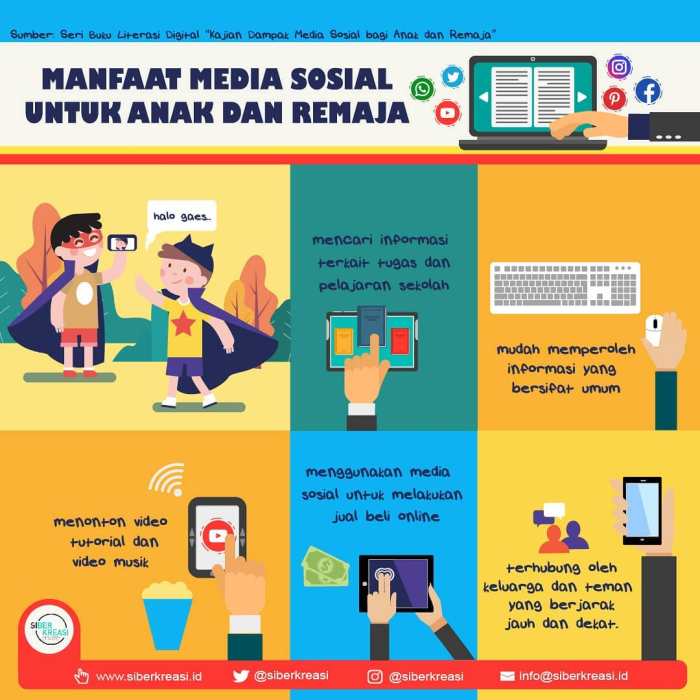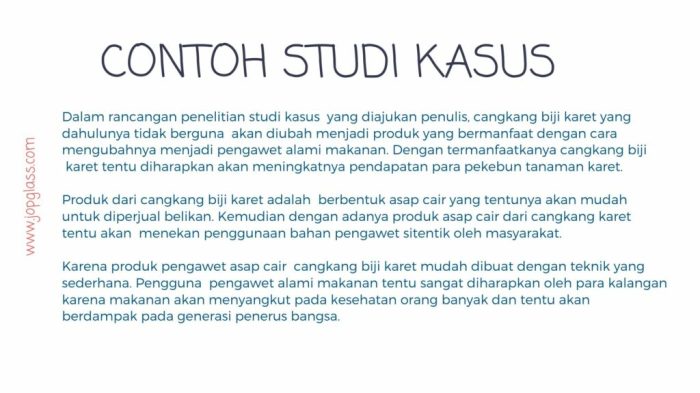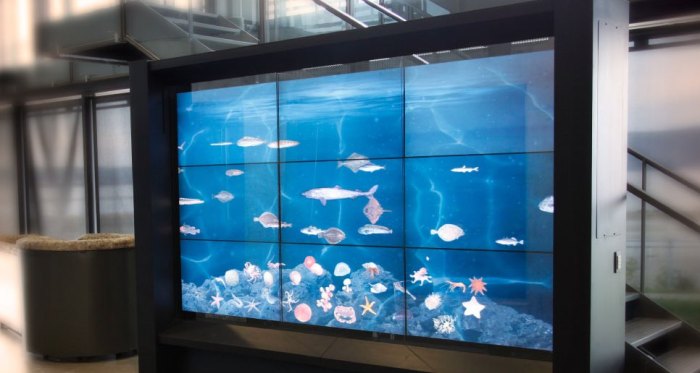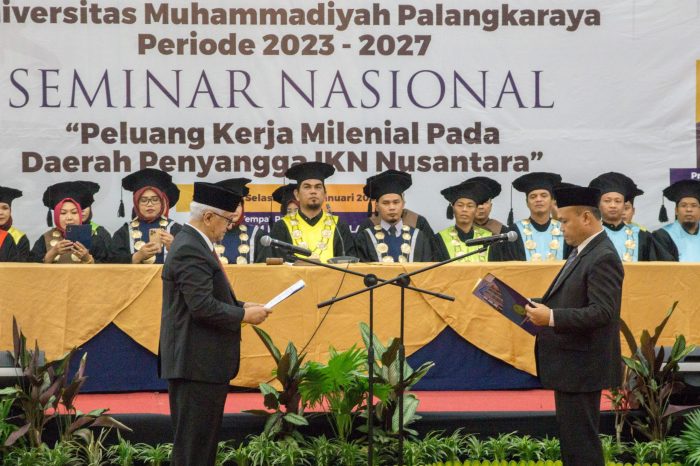Media Sosial: Peluang Dan Tantangan Pendidikan

Yo, what’s up, peeps! “Penggunaan Media Sosial sebagai Alat Pendidikan: Peluang dan Tantangan” – itulah topik yang super hype saat ini. Bayangkan: belajar jadi lebih asik, nggak cuma di buku teks aja! Tapi, ada juga pitfalls yang harus kita hindari, so let’s dive in!
Kita akan bahas bagaimana media sosial bisa jadi senjata ampuh buat belajar, dari Instagram yang kece buat share project sampai TikTok yang asyik buat bikin video edukasi. Tapi, kita juga akan bongkar sisi gelapnya, seperti cyberbullying dan hoax yang bisa bikin kacau.
Siap-siap upgrade knowledge dan jadi lebih bijak dalam memaksimalkan media sosial untuk belajar!
Peluang Penggunaan Media Sosial dalam Pendidikan: “Penggunaan Media Sosial Sebagai Alat Pendidikan: Peluang Dan Tantangan”
Yo, what’s up, educators! Media sosial? Totally not just for posting pics of your avocado toast, right? It’s a legit tool to level up the learning game. Think of it as a supercharged classroom, accessible 24/7. This article’s gonna break down how social media platforms can seriously boost student engagement and create a killer learning environment.
Let’s dive in!
Platform Media Sosial Efektif untuk Pembelajaran
Several platforms are seriously awesome for educational purposes. Each has its own vibe and features, making them ideal for different learning styles and goals. We’ll check out three major players: Instagram, YouTube, and Discord.
| Platform | Kelebihan | Kekurangan | Contoh Penggunaan dalam Pendidikan |
|---|---|---|---|
| Visual learning, easy to use, great for sharing quick updates and engaging visuals (stories, reels). High engagement potential. | Character limits on captions can be restrictive; requires careful content curation to avoid distractions. | Sharing educational infographics, posting short videos explaining concepts, running polls and quizzes for engagement. Teachers can also use it to share daily announcements and assignments. | |
| YouTube | Versatile, allows for long-form content, can host lectures, tutorials, and student presentations. Accessibility is high. | Requires more technical skills to create high-quality videos. Can be overwhelming with irrelevant content if not curated properly. | Posting lecture recordings, creating explainer videos for complex topics, hosting student-created projects, using educational channels for supplemental learning. |
| Discord | Facilitates real-time communication, creates dedicated spaces for different classes or projects, allows for file sharing and collaboration. Strong community building features. | Requires moderation to prevent off-topic discussions and ensure a safe environment. Not all students are comfortable with this type of platform. | Creating study groups, hosting Q&A sessions, sharing course materials, facilitating collaborative projects, providing instant feedback on assignments. |
Strategi Peningkatan Keterlibatan Siswa
Making learning fun and engaging is key. Think interactive activities, real-world connections, and clear communication. Using polls, quizzes, and interactive stories on Instagram can boost participation. On YouTube, student-created videos can be super motivating. Discord fosters a sense of community, making learning more collaborative and less isolating.
Contoh Kegiatan Pembelajaran Interaktif Melalui Media Sosial
Let’s get creative! Imagine using Instagram stories to create interactive quizzes related to the day’s lesson. On YouTube, students could create short documentaries on a topic they’re studying. Discord could host live Q&A sessions with guest speakers or facilitate group projects.
Memanfaatkan Fitur Media Sosial untuk Lingkungan Belajar Kolaboratif
The power of collaboration is real! Think of Discord’s channels for group discussions and shared documents. Instagram allows for easy tagging and sharing of student work, promoting peer learning. YouTube can be used to showcase collaborative projects and presentations, encouraging teamwork and constructive feedback.
Tantangan Penggunaan Media Sosial dalam Pendidikan

Yo, peeps! Media sosial, totally lit, right? But using it for school? That’s a whole different ball game. While it offers awesome opportunities, there are some serious downsides we gotta address. Think of it like this: social media is a double-edged sword – it can be a powerful tool for learning, but it can also be a major distraction and even a source of serious problems.
Let’s dive into the challenges.
Dampak Negatif Media Sosial terhadap Pembelajaran Siswa
Okay, so we’re talking about the not-so-fun stuff. Using social media for school can be a total minefield. There are some real pitfalls that can seriously mess with a student’s learning experience. We’re talking major distractions, misinformation, and even straight-up cyberbullying.
It’s like walking through a virtual jungle filled with both amazing discoveries and potential dangers.
- Cyberbullying:This is a huge one. Imagine the drama – nasty comments, hurtful rumors spread like wildfire, and relentless harassment. It can seriously impact a student’s mental health and ability to focus on their studies. It’s like having a persistent troll shadowing you throughout your digital life.
- Penyebaran Informasi yang Tidak Akurat:Fake news is rampant online. Students might stumble upon misleading information, which can confuse them and affect their understanding of academic subjects. It’s like trying to build a house on a foundation of quicksand – everything is shaky and unreliable.
- Distraksi:Let’s be real, scrolling through endless feeds is super addictive. It can totally derail a student’s focus, making it hard to concentrate on assignments and studies. It’s like trying to study while a party’s going on right next door.
Langkah Pencegahan Dampak Negatif Media Sosial
But don’t worry, it’s not all doom and gloom. We can totally mitigate these risks with some proactive measures. Think of it as installing a solid firewall to protect your digital learning environment.
- Pendidikan Media Digital:Schools need to teach digital literacy skills. Students need to learn how to evaluate sources, identify misinformation, and navigate the digital world safely. It’s like giving them a survival guide for the online jungle.
- Kebijakan Anti-Cyberbullying:Clear policies and consequences for cyberbullying are crucial. Schools need to create a safe and supportive environment where students feel comfortable reporting incidents without fear of retaliation. It’s like having a strong security system in place.
- Pemantauan dan Moderasi:Monitoring social media usage in educational contexts can help identify and address potential problems early on. But this needs to be done responsibly and ethically, respecting students’ privacy. It’s like having a responsible adult watching over the playground.
Pedoman Penggunaan Media Sosial yang Bertanggung Jawab
Creating guidelines for responsible social media use is key. It’s about establishing a shared understanding of appropriate online behavior and ensuring a positive learning environment. Think of it as a digital code of conduct.
| Siapa | Apa yang harus dilakukan | Apa yang tidak boleh dilakukan |
|---|---|---|
| Siswa | Berbagi ide dan sumber daya edukatif; berpartisipasi dalam diskusi kelas secara sopan; melaporkan perilaku yang tidak pantas. | Memposting informasi pribadi; menyebarkan rumor atau gosip; mengabaikan pedoman penggunaan media sosial sekolah. |
| Guru | Memantau diskusi online; memberikan umpan balik konstruktif; mempromosikan penggunaan media sosial yang bertanggung jawab. | Menyensor pendapat siswa secara tidak adil; memberikan tugas yang berlebihan melalui media sosial; mengabaikan privasi siswa. |
Strategi untuk Memastikan Keamanan dan Privasi Data Siswa
Protecting student data is paramount. We need strong strategies to ensure their privacy and security while using social media for educational purposes. Think of it as safeguarding their digital identity.
- Penggunaan Platform yang Aman:Schools should opt for platforms with strong privacy settings and robust security measures. It’s like choosing a well-guarded castle for your digital kingdom.
- Pelatihan Privasi Data:Both students and teachers need training on data privacy best practices. It’s like equipping them with the knowledge to protect their digital fortresses.
- Kebijakan Privasi yang Jelas:Clear policies on data collection, storage, and usage are essential. It’s like having a clear constitution for your digital community.
Integrasi Media Sosial dengan Kurikulum
Yo, peeps! Media sosial bukan cuma buat stalking mantan atau nge-scroll FYP tanpa henti. Ini juga bisa jadi senjata ampuh buat belajar, lho! Bayangin aja, kelas jadi lebih litdan engaging. Kita bakal bahas gimana caranya bikin media sosial jadi bagian penting dari proses belajar mengajar, dari berbagai mata pelajaran sampai cara nge- assessefektivitasnya.
Siap-siap upgrade skill dan knowledge kalian!
Integrasi Media Sosial dalam Berbagai Mata Pelajaran
Gabungin media sosial ke pelajaran itu kayak nambahin flavorke makanan favorit. Bisa banget diaplikasikan di berbagai mata pelajaran, bikin belajar jadi lebih seru dan relatable. Misalnya, sejarah jadi lebih hidup dengan reelsyang menampilkan rekonstruksi peristiwa penting, sains jadi lebih mind-blowingdengan video eksperimen yang keren, dan bahasa jadi lebih fluentdengan diskusi dan role-playingdi platform online.
Contoh Penerapan Media Sosial dalam Pembelajaran, “Penggunaan Media Sosial sebagai Alat Pendidikan: Peluang dan Tantangan”
Okay, mari kita lihat beberapa contoh konkret. Bayangkan kelas sejarah yang menggunakan TikTok untuk membuat video pendek tentang tokoh-tokoh sejarah. Siswa bisa berkreasi dengan script, kostum, dan editinguntuk menyampaikan informasi dengan cara yang menarik dan mudah dipahami.
Atau, kelas sains bisa menggunakan Instagram untuk berbagi foto dan video eksperimen ilmiah yang mereka lakukan. Siswa dapat saling berinteraksi, berbagi hasil, dan belajar dari satu sama lain. Sementara itu, kelas bahasa bisa memanfaatkan Twitter untuk berdiskusi dan bertukar pendapat tentang buku atau film yang mereka baca/tonton.
Mereka bisa menggunakan hashtag tertentu untuk memudahkan pencarian dan diskusi.
Rencana Pembelajaran yang Memanfaatkan Media Sosial
Buat rencana pembelajaran yang mantap, kita perlu memikirkan tujuan pembelajaran yang jelas. Misalnya, tujuan pembelajaran adalah untuk meningkatkan pemahaman siswa tentang perang dunia kedua.
Nah, kita bisa menggunakan media sosial seperti Instagram untuk membuat postinganberupa gambar dan video tentang peristiwa penting dalam perang dunia kedua.
Kita juga bisa menggunakan Twitter untuk berdiskusi tentang dampak perang dunia kedua terhadap dunia.
- Tujuan Pembelajaran:Memahami konsep fotosintesis.
- Aktivitas:Siswa membuat video pendek menjelaskan proses fotosintesis menggunakan aplikasi TikTok, lalu saling memberikan komentar dan kritik konstruktif.
- Asesmen:Guru menilai video berdasarkan pemahaman konsep, kreativitas, dan kualitas presentasi.
Peran Guru dalam Memandu Penggunaan Media Sosial
Guru bukan cuma jadi pengawas, tapi juga guideyang keren. Mereka harus membimbing siswa untuk pakai media sosial dengan bijak, mengajarkan etika berinternet, dan menjaga privasi.
Guru juga perlu membantu siswa untuk memilih platform yang tepat dan mengajarkan cara menggunakannya secara efektif.
Pedoman Penilaian Efektivitas Penggunaan Media Sosial
Ngecek efektivitasnya gak bisa asal-asalan. Kita perlu standar yang jelas. Misalnya, dengan melihat peningkatan nilai ujian siswa, partisipasi aktif di diskusi online, atau kualitas konten yang dihasilkan siswa.
Kita juga bisa pakai kuisioner untuk mengetahui persepsi siswa terhadap penggunaan media sosial dalam pembelajaran.
| Aspek | Indikator | Skor |
|---|---|---|
| Pemahaman Konsep | Ketepatan informasi yang disampaikan | 1-5 |
| Kreativitas | Keunikan dan daya tarik presentasi | 1-5 |
| Partisipasi | Jumlah interaksi dan komentar | 1-5 |
Aspek Etika dan Hukum dalam Penggunaan Media Sosial di Pendidikan
Yo, peeps! Media sosial—it’s like, totally everywhere, right? But using it in school? That’s a whole different ballgame. We gotta navigate the tricky terrain of ethics and laws to keep things legit and avoid major drama. Think of it as leveling up your digital citizenship skills.
This section breaks down the key rules of the road for responsible social media use in education.
Prinsip-prinsip Etika dalam Penggunaan Media Sosial di Pendidikan
Navigating the digital world ethically is key, fam. It’s about respecting others, being responsible for your online actions, and making sure you’re not causing any unnecessary beef. Think before you post, and always remember that your digital footprint can be, like, forever.
- Respect for Privacy:Don’t spill the tea on your classmates or teachers without their permission. Privacy is a big deal.
- Responsible Content Creation:Avoid posting anything that’s offensive, harmful, or inappropriate. Keep it clean, keep it classy.
- Academic Integrity:Don’t plagiarize or cheat using social media. That’s a total fail.
- Digital Citizenship:Be a good digital citizen. Be respectful, responsible, and considerate of others online.
- Cyberbullying Prevention:Don’t participate in or tolerate cyberbullying. It’s not cool, and it can have serious consequences.
Aspek Hukum yang Relevan Terkait Penggunaan Media Sosial di Sekolah dan Pembelajaran Online
Okay, let’s get real. There are actual laws involved here. Schools and educational institutions have policies, and breaking them can lead to serious consequences. Think suspension, expulsion—the whole nine yards.
- Copyright Infringement:Using copyrighted material without permission is illegal. Don’t get caught slippin’.
- Data Privacy Regulations:Schools must comply with laws protecting student data. This includes things like FERPA in the US.
- Cyberbullying Laws:Many jurisdictions have laws against cyberbullying. It’s not just a school issue; it’s a legal one.
- Acceptable Use Policies (AUPs):Schools typically have AUPs that Artikel acceptable online behavior. Read them carefully, and follow them.
Aturan dan Kebijakan untuk Penggunaan Media Sosial yang Aman dan Bertanggung Jawab
To stay out of trouble, schools need clear rules. These rules help create a safe and positive learning environment, both online and offline. Think of them as the ultimate guide to surviving the digital jungle.
| Aturan | Penjelasan |
|---|---|
| No Cyberbullying | Zero tolerance for harassment, threats, or intimidation. |
| Privacy Protection | Respect the privacy of others; don’t share personal information without consent. |
| Appropriate Language | Use respectful and appropriate language in all online communications. |
| Academic Integrity | No plagiarism or cheating using social media. |
| Supervised Access | School-provided devices and networks should be monitored. |
Contoh Kasus Pelanggaran Etika dan Hukum dan Solusi Penyelesaiannya
Let’s look at some real-life situations to illustrate the potential problems. Learning from mistakes is key, and understanding the consequences is crucial.
- Kasus:A student posts embarrassing photos of a classmate without their consent. Solusi:The student faces disciplinary action from the school, potentially legal action from the victim’s family, and may experience social consequences.
- Kasus:A student uses social media to cheat on an exam by sharing answers. Solusi:The student receives a failing grade, potential suspension, and could face academic probation or expulsion.
- Kasus:A teacher uses school social media accounts to express their personal political views. Solusi:The teacher receives a warning or faces disciplinary action for violating school policy on appropriate social media use.
Pentingnya Literasi Digital bagi Siswa
Literasi digital isn’t just about knowing how to use technology; it’s about understanding its impact, navigating its challenges, and using it responsibly. It’s about being informed, critical, and ethical in our online interactions. It’s about being a savvy digital citizen.
Penutupan Akhir
So, there you have it, fam! “Penggunaan Media Sosial sebagai Alat Pendidikan: Peluang dan Tantangan” is a total game-changer. It’s like a double-edged sword – powerful but risky. The key is to be smart, responsible, and always stay aware.
Let’s make learning fun, engaging, and safe, alright?
FAQ dan Solusi
Apakah semua platform media sosial cocok untuk pendidikan?
Tidak. Platform yang tepat bergantung pada target audiens, jenis konten, dan tujuan pembelajaran. Beberapa platform lebih cocok untuk kolaborasi, sementara yang lain lebih baik untuk penyampaian informasi.
Bagaimana cara mengatasi masalah privasi data siswa di media sosial?
Gunakan pengaturan privasi yang ketat, batasi akses ke informasi pribadi, dan ajarkan siswa tentang pentingnya menjaga keamanan data online.
Bagaimana peran orang tua dalam pengawasan penggunaan media sosial anak untuk pendidikan?
Orang tua perlu memantau aktivitas online anak, mendiskusikan penggunaan media sosial yang bertanggung jawab, dan memberikan dukungan jika anak menghadapi masalah online.
Bagaimana cara mengukur efektivitas penggunaan media sosial dalam pembelajaran?
Dengan menganalisis keterlibatan siswa, peningkatan pemahaman konsep, dan hasil belajar melalui tes dan kuis.



